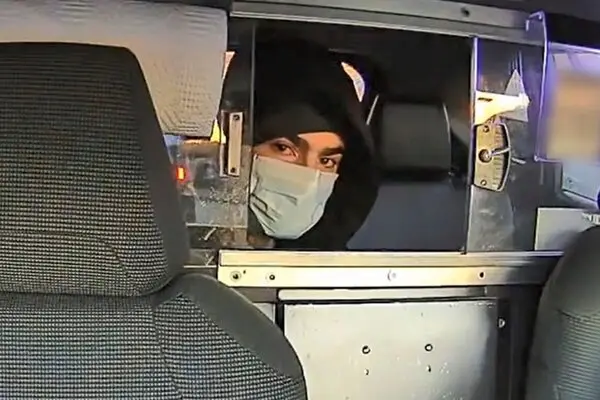‘Person of interest’ in killing of health care CEO arrested on gun charge
 09 December 2024
09 December 2024


A man arrested Monday on a gun charge in Pennsylvania “is believed to be our person of interest in the brazen, targeted murder of Brian Thompson, CEO of UnitedHealthcare, last Wednesday in Midtown Manhattan,” New York Police Commissioner Jessica Tisch announced.
Luigi Mangione, 26, was found at a McDonald’s in Altoona with a gun and a suppressor “both consistent with the weapon used in the murder,” Tisch said, referring to a device that muffles the sound of a firearm.
Authorities also recovered “a hand-written document that speaks to both his motivation and mindset,” she said, along with a “fraudulent New Jersey ID matching the ID our suspect used to check into his New York City hostel before the shooting.”
“He matches the description” of the person police were looking for, Mayor Eric Adams said. “He’s also in possession of several items that we believe will connect him to this incident.”
Magione has been arrested by the Altoona Police Department on firearms charges, the commissioner said. The weapon is a ghost gun – an untraceable, homemade weapon – NYPD Chief of Detectives Joseph Kenny said.
The 26-year-old was picked up at in Altoona – about 230 miles from the hotel where the shooting occurred – after a McDonald’s employee thought he resembled the man in New York Police Department photos and called police, officials said.
Altoona police are waiting for NYPD detectives, who are en route.
The sprawling manhunt for whoever shot Thompson on December 4 intensified as it crossed state lines: The suspect was believed to have left New York City on an interstate bus, police officials said, after video cameras captured him entering the George Washington Bridge Bus Station on 178th Street but not leaving.
Authorities had known what the suspect looks like but not who or where he is. Over the weekend, they released new photos of him: in the backseat of a taxi and wearing a jacket while walking on the street. In both, he wears a hood and a face mask.
Through glimpses of his unmasked face, his movements through the country’s largest city and the belongings police say he discarded, he seems almost familiar but remains a mystery.
The public, too, had seen the suspect in surveillance photos and videos, including one with him pointing the weapon at Thompson’s back.
A determination of the suspect’s identity was expected to come soon, former FBI profiler Mary Ellen O’Toole said before Monday’s developments in Altoona.
“I’m thinking we’re going to know who this is within a matter of a few more days, if that,” she told CNN. “He’s completely outnumbered. With that kind of manpower behind their efforts, they’re going to come up with the information that identifies him.”
Authorities would have hung on the fugitives missteps, experts say.
“The ability to stand up against that kind of an investigation, one person can’t do it, no matter how arrogant you are,” O’Toole said. “You’re bound to make mistakes.”
Some of the suspect’s actions – such as pulling his mask down on camera and leaving behind inscribed shell casings that may point to a motive, a burner phone and a partial fingerprint on a water bottle – only added to the clues left behind for authorities.
Police also traced his movements before the shooting via a Greyhound bus originating in Atlanta and bound for New York City.
“The thing that works against the shooter is that law enforcement will get better, but the shooter can’t go back and undo what he’s already done,” O’Toole said.
The shooter appears to have perhaps only practiced such a killing before, rather than being an experienced assassin, O’Toole said. Leaving shell casings or Monopoly money behind for authorities would not typically align with the actions of a killer who wanted “to blend back into oblivion,” she said.
Police continue to look into whether words found on the casings – “Delay, deny, defend,” Kenny said – may point to a motive. A 2010 book critiquing the insurance industry is titled, “Delay Deny Defend,” a common description of its tactics. (CNN)




